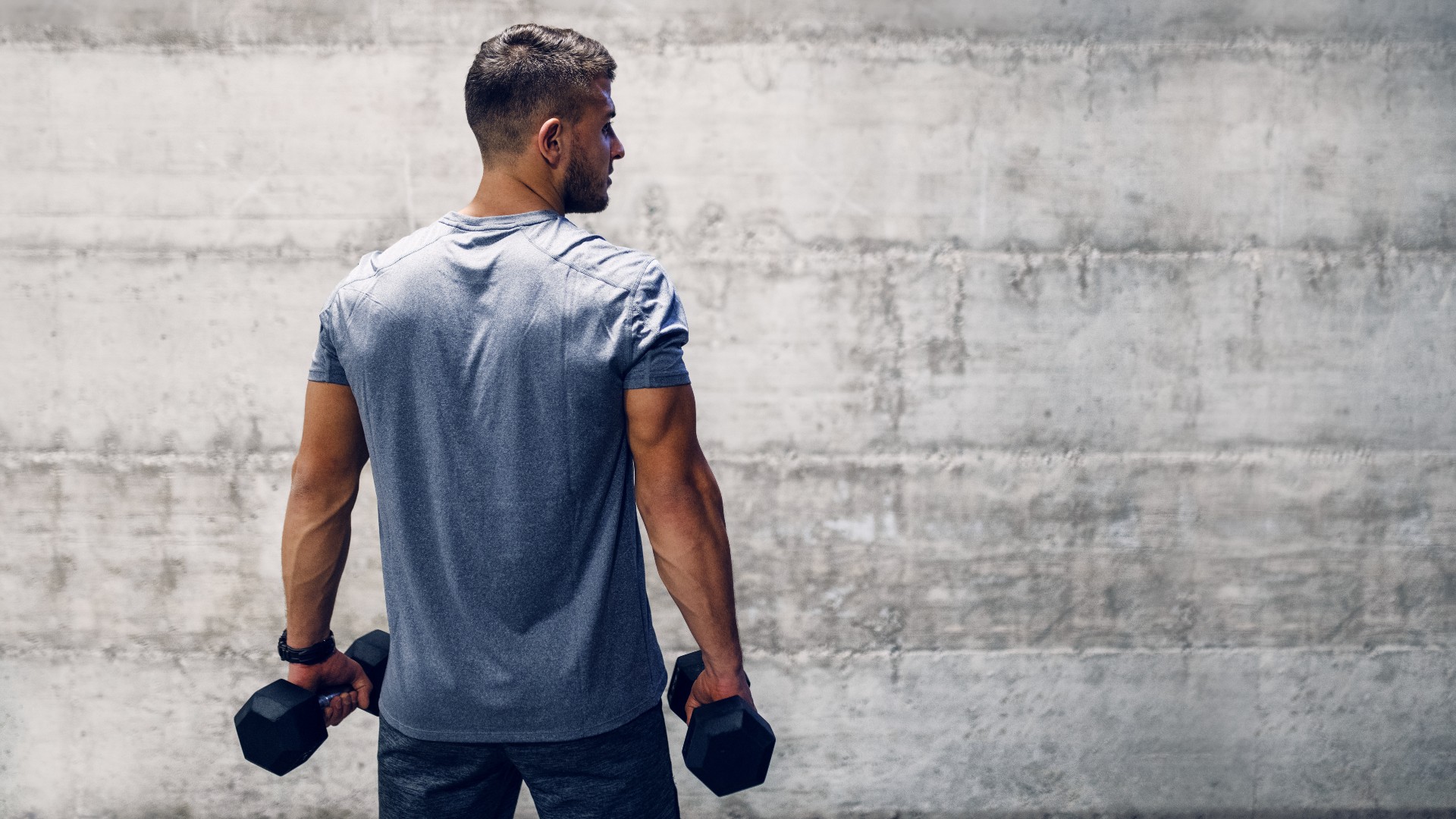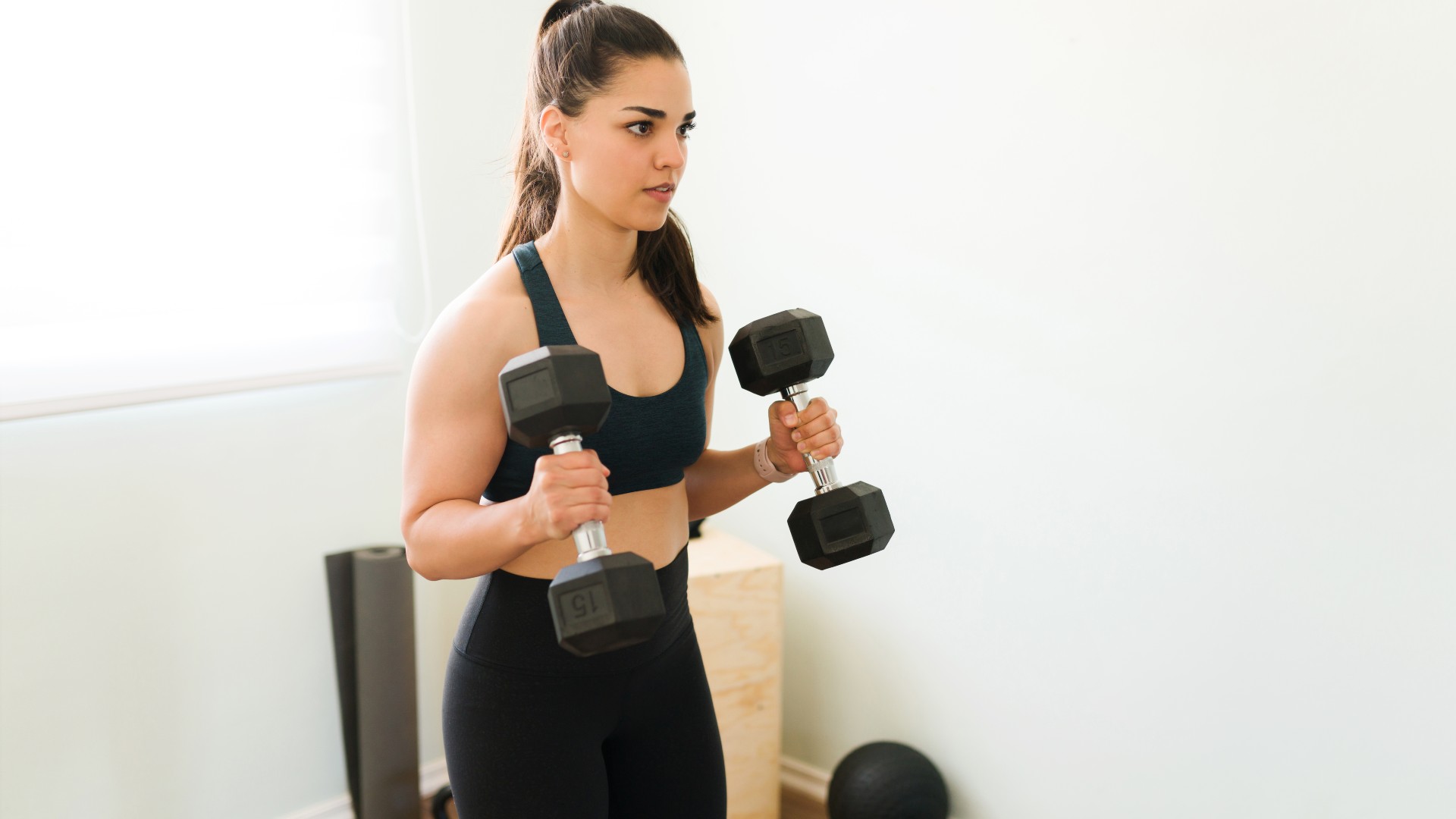
This five-move back and biceps workout harnesses your pulling power and strengthens upper-body muscles.
If you’re already familiar with the push-pull split commonly found in resistance programs, you’ll know training the chest and triceps or back and biceps in tandem is the “done way.” Although it doesn't have to be. We prefer training multiple muscle groups together, but sometimes it’s worth focusing your attention on one or two groups and hitting them hard.
Thankfully, the back and biceps naturally recruit together, meaning our five exercises below torch these muscles and give you more bang for your buck in a shorter time. Grab a set of the best adjustable dumbbells, and give these a try.

There are hundreds of upper body exercises capable of sculpting stronger back and bicep muscles, and you can build lean mass and strength using a mix of isolation and compound exercises, meaning moves that work one muscle group and others that target multiple.
We start with the compound moves to fatigue the larger, more powerful muscles first, finishing with your isolation exercise to tire the biceps, which are much smaller than back muscles like the latissimus dorsi (wing-shaped muscles that run down the sides of the back) and trapezius (upper, mid and lower).
Pushing activates the chest and triceps, so it makes sense to naturally pair push and pull moves if you want to save time on your next workout.
5-move back and biceps dumbbell workout
Rather than adopting a traditional resistance training session with sets and reps, try this back and biceps workout as a circuit instead. Check each short video below to learn how to do each exercise, and if you’re unsure if it’s right for you, check in with a personal trainer first.
Get instant access to breaking news, the hottest reviews, great deals and helpful tips.
We recommend 45 seconds per exercise with 15 sets of rest between. Limit rest between rounds and aim to complete 3-5 rounds depending on how much time you have.
1. Renegade row
Renegade rows activate the same muscles as planks, including your chest, shoulders, core, arms, back, hips, glutes and legs. Deeper stabilizing muscles are at play to hold you in plank position while you row. The rowing motion works the back muscles like the lats and your biceps. Learn how to do renegade rows and the benefits in more detail here.
Remember to keep your hips square to the mat and core engaged. Pull your elbow back toward your hip above the height of your back and pause at the top of the row.
2. Dumbbell bentover row
The move hits the latissimus dorsi, rhomboids, trapezius, rear deltoids, erector spinae and biceps and activates your glutes, hip flexors and hamstring muscles. These muscles are responsible for good posture and back muscle definition.
Start in a bentover position by hinging forward at the hips and holding a dumbbell in each hand. With your chest almost parallel to the floor, row the dumbbells toward your hips. Your muscles are under constant load as you flex and extend your elbows. Keep your core engaged, and avoid arching your back. To try the move using a barbell, learn the Pendlay row vs barbell row.
3. Dumbbell reverse flyes
The dumbbell exercise targets the traps, rear deltoids and rotator cuffs, engaging the lats less. Start by hinging forward at the hips and keep your core engaged throughout. Adopt a neutral grip for flyes and slowly raise your arms to the sides and squeeze your shoulder blades together. Avoid swinging your arms to lift a heavier weight, and always move with control.
4. Dumbbell hammer curls

The hammer curl isolates the biceps, including the brachialis and brachioradialis, and uses a neutral grip. Learn how to do hammer curls here. Keep your elbows stable and close to the body throughout the move, and don’t rush! Move with control, adopting the time under tension technique so the muscles can work for longer.
5. Dumbbell shrugs

Shrugging hits the trapezius, rhomboids and forearms and improves grip strength. We recommend using a trap bar, but dumbbells also work well. Hold a dumbbell in each hand by your sides and keep your core engaged as you lift your shoulders up and down. The activation should be in your upper back, so try not to round the shoulders as you move — squeeze your shoulder blades together.
Bottom line
If you don’t have access to a personal trainer and are unsure how to program your workouts toward building muscle, we cover hypertrophy vs strength training further, which gives you tips for the sets, reps and load you should consider.
Building strength and muscle are two different things — just because the strength of a muscle improves, it doesn’t guarantee muscle definition or a sculpted back and biceps.
It also depends on whether or not you want to develop maximal strength, meaning you’ll generally lift much heavier weights using barbells. Hypertrophy favors higher reps and a lighter percentage of your maximal abilities, which is when dumbbells can be useful.
But if you’re looking for a quick, accessible back and biceps workout, these five exercises are the perfect way to mix up your upper body programs and hit torch mode on your muscles.
And don’t worry if you’re currently without a training plan. It’s still possible to build muscle and strength and improve muscle definition using shorter circuit workouts like this one. Just make sure you train consistently (we recommend three or more times a week if you can), and include a diverse mix of weightlifting exercises to challenge and stimulate different muscle groups.
More from Tom's Guide
- I did the 7-minute Crab Walk exercise every day for a week, here are my results
- I'm a personal trainer and this is one of the best compound exercises for strengthening your back
- Forget planks, this seated ab workout sculpts your core

Sam Hopes is a level 3 qualified trainer, a level 2 Reiki practitioner and fitness editor at Tom's Guide. She is also currently undertaking her Yoga For Athletes training course.
Sam has written for various fitness brands and websites over the years and has experience across brands at Future, such as Live Science, Fit&Well, Coach, and T3.
Having coached at fitness studios like F45 and Virgin Active and personal trained, Sam now primarily teaches outdoor bootcamps, bodyweight, calisthenics and kettlebells.
She also coaches mobility and flexibility classes several times a week and believes that true strength comes from a holistic approach to training your body.
Sam has completed two mixed doubles Hyrox competitions in London and the Netherlands and finished her first doubles attempt in 1:11.
